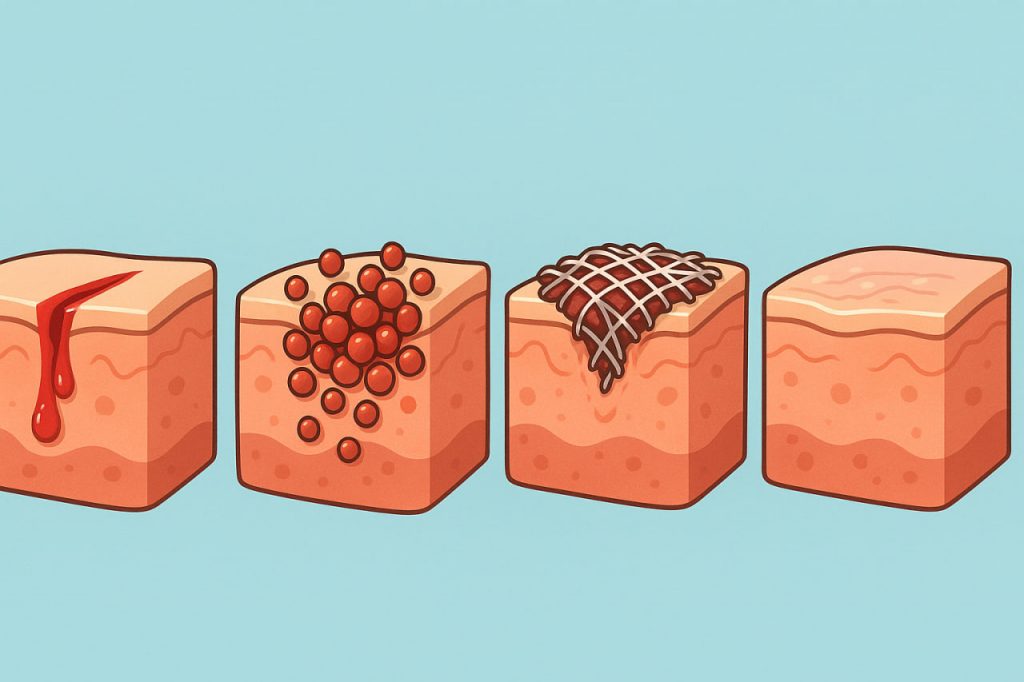When the skin is cut or injured, the body immediately activates a complex system of responses to stop bleeding and begin healing. Blood plays a central role in this process, not only by clotting to seal the wound but also by transporting immune cells and nutrients that repair damaged tissue.
1. The Immediate Response – Vasoconstriction
Right after a wound occurs, blood vessels around the injury narrow (constrict). This reduces blood flow to the damaged area, slowing down bleeding and giving the body time to activate further defenses.
2. Platelet Plug Formation
- Platelets (tiny cell fragments in the blood) rush to the site of the wound.
- They stick to the damaged vessel walls and to each other, forming a temporary plug.
- Platelets release chemical signals that attract more platelets and start the clotting process.
3. Blood Clotting (Coagulation)
- Special proteins in the blood called clotting factors create a network of fibrin threads.
- This fibrin net traps red blood cells and platelets, forming a stable blood clot.
- The clot seals the wound, preventing further blood loss and protecting against infection.
4. Inflammation and Defense
- White blood cells move to the wound site to fight bacteria and clean dead tissue.
- This causes redness, warmth, and slight swelling — normal signs of healing.
5. Tissue Repair and Healing
- Over the next days, new cells grow to replace damaged ones.
- Blood brings oxygen and nutrients needed for tissue regeneration.
- Small blood vessels (capillaries) form, helping rebuild healthy tissue.
6. Clot Dissolution
- When the wound is healed, enzymes break down the clot in a process called fibrinolysis.
- The clot is replaced by normal skin or scar tissue, depending on the severity of the injury.
Conclusion
After a wound, blood undergoes a carefully coordinated sequence: vessel constriction, platelet plug, clotting, immune defense, repair, and clot removal. This process ensures that bleeding stops quickly and healing begins. The ability of blood to react so precisely shows how vital it is not only for survival but also for regeneration.
Glossary
- Platelets – small cell fragments in the blood that help with clotting.
- Clotting factors – proteins in the blood that create fibrin to form a clot.
- Fibrin – protein threads that stabilize a blood clot.
- Fibrinolysis – the breakdown of a clot after healing.
- Inflammation – the immune system’s response to injury, with redness and swelling.


